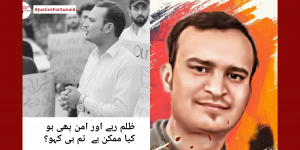Religion can serve as an instrument of social cohesion and tolerance; however, when it comes to Pakistan, it always remained a cause of conflict due to its political use. Religion is one of the guaranteed tools for political leaders to achieve power. It is always easy for them to manipulate it for their personal gains. The sectarian division is one of the outcomes of using the divide and rule technique in the name of religion and has been widely used by our leaders for more than twenty-seven years and is still in practice.
Looking at Pakistan’s history, it may seem that seeds of sectarian conflict were sown at the time of partition, but there were very few incidents of sectarian violence at that time on both sides. The actual strife arose in the late 1970s with the Zia policy of Islamization which shattered the unity between Shia and Sunni and even among Sunnis sects. Before this, there was unity, and even the Shia community supported the Sunni movement against Ahmadis. But Zia’s introduction of Islamic sharia, enforcing the Sunni Hanafi system, and jurisprudence shattered the unity. Consequently, Zia’s rule nurtured the growth of sectarian conflict. And was successful in forming the perception among the Shia that his government is more inclined towards the establishment of a Sunni Hanafi state, reflecting on the Islam of the dominant community which ultimately threatens the Shia identity. Shia community did not accept it and were persistent in following their own fiqh and having their own separate identity for which Zia government was not ready because Pakistan was the Sunni dominant state and the Zia plan was to rule the country, which was not possible in the latter case. Where there was already unrest, the Iran revolution further mobilizes Shia and sectarian lines were drawn. On the other hand, Saudi Arabia was supporting Wahhabis in response to the Iran revolution. Both the countries Iran and Saudi Arabia were busy providing funds to their respective sects, making Pakistan an easy battleground for supporting their perspective with money and political indoctrination, resulting in Sects violence in Pakistan. The selective backing of the Afghan groups by the government further again correspond to sectarian patterns on both sides of the divide and further put the fire of violence high. the level of polarization at the sectarian level amplified with the rising of splinter groups of various Shia and Sunni religious organizations, promoting hatred against each other. These organisations were meant to use against each other. In later years due to extreme violence, these organisations were banned and many of their members were even arrested but after some time they turn out with different names but with the same intentions and members. It was started in the 1980s but still, continues in causing unsurmountable damages.
Mostly Local people were used in the name of religion throughout this game of gaining personal interest. Thousands of people have been killed in this sectarian violence in various parts of the country, especially marginalised groups’ professional and intelligentsia. The worst part of this violence is the periodic attack on each other religious sites, targeting each other religious leaders. Even a stage came where they declare each other non-Muslims.
The state actors need to pay serious attention to this issue. Unless the fault lines are identified, the problem cannot be resolved. These extremist groups and those who promote hate speech against other sects need to be permanently banned. All such material that promotes hatred against any denomination, whatever the basis is, should be removed from the textbooks and other reading resources. The government need to remain neutral while dealing with sectarian conflict. External influence in sectarian conflict needs to be checked.




